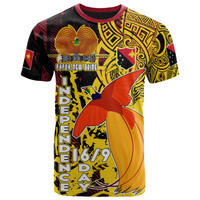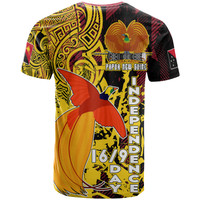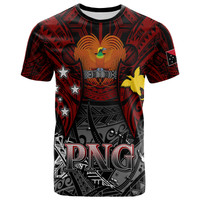What’s the Difference Between Samoa and American Samoa?
Posted by Maris on 9th Apr 2024
The Samoan Islands are a group of closely related islands in the South Pacific Ocean that are situated midway between Hawaii and New Zealand. However, their political paths have diverged. If you have been following this blog and have been wondering where all the material regarding the islands of Tutuila and Manu'a is located, the answer is that they are part of American Samoa, a separate nation. Yes, Samoa and American Samoa are two distinct nations! In this guide to the differences between Samoa and American Samoa, we examine how distinct but similar they are.
Samoa and American Samoa: Two Different Countries

The first thing to realize when trying to distinguish between American Samoa and Samoa is that, although the islands are just 70 km/43.5 mi away, they are two distinct countries.
Samoa has its own head of state and is a sovereign nation. American Samoa, on the other hand, is an unincorporated territory of the US.

How Samoa and American Samoa Became Separate Countries
So how did American Samoa and Samoa become independent nations? We need to take a little history lesson in order to respond to that.
Please take note that the following terms will be used to describe the Samoan islands as we go through their history in the next sections:
- Samoan islands (both today’s Samoa and American Samoa)
- Western Samoa (the islands of today’s Samoa)
- Eastern Samoa (the islands of today’s American Samoa).
Samoan Civil War

With the outbreak of the first Samoan Civil War in the late 1800s, ties between Samoa's eastern and western islands started to deteriorate (1886-1894). The conflict revolved around the four dominant "aiga" (family) of the Samoan islands, specifically the "aiga" of Malietoa and Mata'afa, who couldn't agree on who should rule over the entire group of islands. To get weapons to end the conflict, the Samoans in turn surrendered their territories to European nations—Germany, the United States, and Britain.
As all of the colonial powers wanted to further their interests in the Samoan islands, tensions between Germany, the US, and Britain also arose in the interim.
The Berlin Treaty of 1889 formed an agreement to "settle" the interests of both Samoans and Europeans. It said that an independent Samoa would be founded under the leadership of a foreign-appointed Samoan king, and that the US, Britain, and Germany would be granted significant consultative powers about Upolu. However, that was just the start of Samoa's division into western and eastern regions.

The Second Samoan Civil War

Even though Malietoa Laupepa, a Samoan king, was appointed to the throne in 1894, the war between Samoan factions and Western powers resurfaced after he passed away in 1898, sparking the Second Samoan Civil War.
After the Berlin Treaty was ruled invalid on December 2, 1899, the Tripartite Treaty was drafted, granting the Germans sovereignty over western Samoa (modern-day Samoa) and the Americans dominion over eastern Samoa (modern-day American Samoa). German claims to Tonga, the Solomon Islands, and Niue were fully renounced in exchange for the British pulling out of the Samoan arrangement.
Samoa’s Independence

During World War One, Germany lost control of western Samoa to New Zealand. Subsequently, starting in the 1920s, Western Samoa waged an independence struggle. On January 1, 1962, the western islands of Samoa attained independence and were dubbed Western Samoa until the government eliminated the "Western" designation in 1997, renaming the nation Samoa, as it is known today.
Cultural Differences Between Samoa and American Samoa

Both Samoa and American Samoa are dominated by the traditional features of Samoan culture, or Fa'a Samoa. Both sides share a similar tribal structure and family-oriented culture, with Samoan being the primary language spoken, people dressing in lavalava (sarongs), and churches filled with singing on Sundays.
The two nations' international alliances, however, are where the major distinctions are found. For instance, like its close neighbor New Zealand, Samoa utilizes Type 1 electrical plugs, drives on the left side of the road, and enjoys rugby. Conversely, American Samoa utilizes US dollars as its currency, drives on the right, and its people tend to favor NFL football over rugby. They also use 120V Type A and B electrical plugs.














